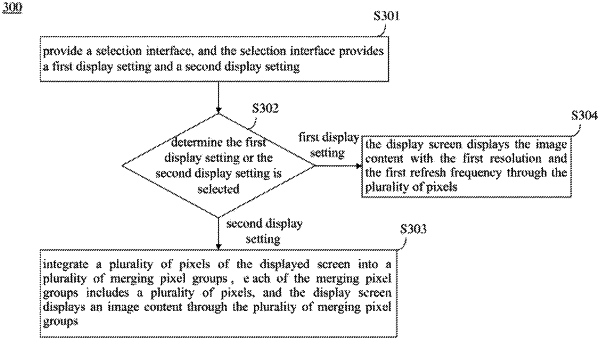| CPC G09G 5/006 (2013.01) [G09G 2340/0407 (2013.01); G09G 2354/00 (2013.01)] | 7 Claims |

|
1. A display device capable of switching display mode, comprising:
a display screen, including a plurality of pixels;
a driver, electrically connected with the display screen;
a connector, for receiving a first display setting or a second display setting and an image content; and
a controller, electrically connected with the connector and the driver, wherein the controller controls to display the image content through the pixels of the display screen when the connector receives the first display setting, and the controller integrates the pixels of the display screen into a plurality of merging pixel groups to display the image content when the connector receives the second display setting;
wherein each one of all the pixels in any one of the merging pixel groups displays the same color when the merging pixel groups display the image content, and the pixels in any one of the merging pixel groups emit lights in the same direction;
wherein the first display setting includes a first resolution and a first refresh frequency, and the second display setting includes a second resolution and a second refresh frequency;
wherein a first resolution of the first display setting is higher than a second resolution of the second display setting, and a first refresh frequency of the first display setting is lower than a second refresh frequency of the second display setting;
wherein the display device switches from the first refresh frequency to the second refresh frequency higher than the first refresh frequency when the merging pixel groups display the image content.
|